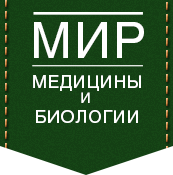| Об авторе: |
Кинаш О. В., Лисаченко О. Д., Куприян К. В. |
| Рубрика |
БИОЛОГИЯ |
| Тип статьи |
Научная статья. |
| Аннотация |
Грибы рода Аspergillus чаще всего вызывают патологические процессы у особей с иммунодефицитом, а также у тех, кто находится в длительном контакте с высокими концентрациями спор. Уже известные средства борьбы с контаминацией патогенными микромицетами, как правило, опасны для окружающей среды. В данном исследовании представлены результаты изучения фунгіцид-ных и фунгиостатических свойств веществ растительного происхождения - эфирного масла монарды и эвгенола. Для реализации цели были использованы стандартные методы диффузии в агар. Установлено, что исследуемые вещества действительно обладают спектром фунгицидных и фунгиостатичних своств, которые проявлялись задержкой роста и нарушением фаз развития у культур грибов видов Aspergillus fumigatus, A. flavus и A. niger. Фунгиостатическое действие исследуемых веществ проявлялась отсутствием пигментации и конидиеге-неза, слабым развитием вегетативного мицелия тест-культур. На втором этапе проведено определение минимальной подавляющей концентрации (МПК) эфирного масла монарды и эвгенола относительно исследуемых культур грибов. Установлено, что фунгицидные и фунгиостатические свойства эвгенола проявляются в более низких концентрациях по сравнению с эфирным маслом монарды. |
| Ключевые слова |
эфирное масло монарды трубчатой, эв-генол, Aspergillus fumigatus, Aspergillus flavus, Аspergillus niger |
| Список цитируемой литературы |
- Melnyk VP, Panasiuk OV, Panasiuk VO, Klymenko MT, Petrenko OO, Radysh HV. Aktyvnist deiakykh zasobiv narodnoi medytsyny ta likarskykh preparativ proty mikobakterii tuberkulozu in vitro. Fitoterapiia. Chasopys. 2012 Ber;1:30-3.
- Vyznachennia chutlyvosti mikroorhanizmiv do antybakterialnykh preparativ : metod. vkazivky : zatv. Nakazom MOZ Ukrainy № 167 vid 05.04.2007 r. Novosty medytsynы y farmatsyy [Internet]. 2008 Ver. 16 [tsytovano 25.10.2013];236. Dostupno : http://www.mif-ua.com/archive/ article/4835.
- Instruktsiia pro zakhody z profilaktyky ta likvidatsii asperhilozu ptytsi vid 28.03.2005 № 27 [tsytovano 6.04.2014]. Dostupno: http://www.vet.in.ua//
- Bilai VI, redaktor. Metody eksperimentalnoi mikologii. Kiev: Nauk. dumka; 1982. Razd. 2, Mikroskopicheskoe izuchenie gribov; s. 76-105.
- Kondratiuk TO. Kharakter vplyvu efirnykh olii, shcho mistiat terpenovi vuhlevodni, na chorni drizhdzhi Exophiala alcalophila sugly. Imunolohiia ta alerholohiia (nauka i praktyka). Dodatok (Tezy dopovidei mizhnarodnoi naukovoi konf. Mikrobiolohiia ta imunolohiia - perspektyvy rozvytku v KhKhI stolitti; 2014 Kvit 10-11;.Kyiv). 2014;1:60.
- Nikolaevskii VV., Eremenko AE., Ivanov IK. Biologicheskaia aktivnost efirnykh masel. Moskva: Meditcina; 1987. 144 s.
- Šimović M, Delaš F, Gradvol V, Kocevski D, Pavlović H. Antifungal effect of eugenol and carvacrol against foodborne pathogens Aspergillus carbonarius and Penicillium roqueforti in improving safety of fresh-cut watermelon. J. Intercult. Ethnopharmacol [Internet]. 2014 Jul-Sep [cited 2016 Feb 20];3(3):91-96. Available from: https://www.ncbi.nlm.nih.gov/pmc/ articles/PMC4566673/ DOI: 10.5455/jice.20140503090524.
- Alessandro C. Pasqualotto, еditor. Aspergillosis: From Diagnosis to Prevention. Springer Science + Business Media B.V.; 2010. 1027 p.
- Chekiri-Talbi M, Denning DW. The burden of fungal infections in Algeria. J Mycol Med [Internet]. 2017 Jun [cited 2016 Feb 18];27(2):139-145. Available from: http://www.sciencedirect.com/science/article/pii/S1156523316302591? via%3Dihub DOI: 10.1016/j.mycmed.2017.02.005.
- Mickienė R, Bakutis В, Maruška A, Ragažinskienė О, Kaškonienė V. Effect of the volatile secondary metabolites of Monarda didyma l., Lamium album l. and Myrrhis odorata l. plants against micromycetes of indoor environments of animals. Vet Med Zoot [Internet]. 2014 [cited 2016 Apr 25];68(90):48-54. Available from: http://vetzoo.lsmuni.lt/data/vols/ 2014/68/pdf/mickiene.pdf
- Espinel-Ingroff A, Rezusta A. E-test method for testing susceptibilities of Aspergillus spp. to the new triazoles voriconazole and posaconazole and to established antifungal agents: comparison with NCCLS broth microdilution method. J Clin Microbiol [Internet]. 2002 Jun [cited 2016 Jan 23];40(6):2101-7. Available from: http://jcm.asm.org/content/40/6/2101.long
- Braga PC, Sasso MD, Culici M, Alfieri M. Eugenol and thymol, alone or in combination, induce morphological alterations in the envelope of Candida albicans. Fitoterapia [Internet]. 2007 Sep [cited 2017 Apr 23];78(6):396-400. Available from: http://www.sciencedirect.com/ science/article/pii/ S0367326X07001050? via%3Dihub DOI.org/10.1016/j.fitote.2007.02.022
- Bernuci KZ, Iwanaga CC, Fernandez-Andrade CM, Lorenzetti FB, Torres-Santos EC, Faiões VD, et al. Evaluation of Chemical Composition and Antileishmanial and Antituberculosis Activities of Essential Oils of Piper Species. Molecules [Internet]. 2016 Dec 12 [cited 2017 May 02];21(12): 1-12. Available from: http://www.mdpi.com/1420-3049/21/12/1698 DOI: 10.3390/molecules 21121698.
- Farruggia E, Bellia M. Occupational allergic asthma in greenhouses. Report of a clinical case. Med Lav. 2001 May-Jun;92(3):203-5.
- Moreno-Ancillol A, Domínguez-Noche C, Gil-Adrados AC, Cosmes PM. Hypersensitivity pneumonitis due to occupational inhalation of fungi-contaminated corn dust. J Investig Allergol Clin Immunol. 2004;14(2):165-7.
- Kumar P, Mishra S, Kumar A, Kumar S, Prasad CS. In vivo and in vitro control activity of plant essential oils against three strains of Aspergillus niger. Environ Sci Pollut Res Int [Internet]. 2017 Aug 7 [cited 2017 May 03];24(27):21948–21959. Available from: https://link.springer.com/article/ 10.1007%2Fs11356-017-9730-x DOI: 10.1007/s11356-017-9730-x.
- Groll AH, Walsh TJ. Uncommon opportunistic fungi: new nosocomial threats. Clin Microbiol Infect [Internet]. 2001 [cited 2017 May 02];7 Suppl 2:8-24. Available from: http://onlinelibrary.wiley.com/doi/10.1046/j.1469-0691.2001.00054.x/pdf DOI: 10.1046/j.1469-0691.2001.00054.x
- Van Waeyenberghe L, Pasmans F, Beernaert LA, Haesebrouck F, Vercammen F, Verstappen F, et al. Microsatellite typing of avian clinical and environmental isolates of Aspergillus fumigatus. Avian Pathol [Internet]. 2011 Feb [cited 2017 May 02];40(1):73-7. Available from: http://www.tandfonline.com/ doi/full/10.1080/03079457.2010.540229 DOI: 10.1080/03079457.2010.540229.
- Kaur R, Mehra B, Dhakad MS, Goyal R, Dewan R. Pulmonary aspergillosis as opportunistic mycoses in a cohort of human immunodeficiency virus-infected patients: Report from a tertiary care hospital in North India. Int J Health Sci (Qassim) [Internet]. 2017 Apr-Jun [cited 2017 Oct 16];11(2):45-50. Available from: https://www.ncbi.nlm.nih.gov/ pmc/articles/PMC5426406/
- Hartmann T, Sasse C, Schedler A, Hasenberg M, Gunzer M, Krappmann S. Shaping the fungal adaptome--stress responses of Aspergillus fumigatus. Int J Med Microbiol [Internet]. 2011 Jun [cited 2017 Oct 16];301(5):408-16. Available from: DOI: 10.1016/j.ijmm.2011.04.008.
- Jensen AB, Aronstein K, Flores JM, Vojvodic S, Palacio MA, Spivak M. Standard methods for fungal brood disease research. J Apic Res [Internet]. 2013 Jan [cited 2017 Oct 16];52(1). Available from: https://www.ncbi.nlm.nih.gov/ pmc/articles/PMC3816652/ DOI:10.3896/IBRA.1.52.1.13.
- Puškárová A, Bučková M, Kraková L, Pangallo D, Kozics K. The antibacterial and antifungal activity of six essential oils and their cyto/genotoxicity to human HEL 12469 cells. Sci Rep [Internet]. 2017 Aug 15 [cited 2017 Oct 16];7(1):8211. Available from: https://www.ncbi.nlm.nih.gov/pmc/ articles/ PMC5557807/ DOI: 10.1038/s41598-017-08673-9.
|
| Публикация статьи |
«Мир Медицины и Биологии» №1(63), 2018 год, 169-173 страницы, код УДК 579.6:665.3: 582.282.123.4 |
| DOI |
10.26724/2079-8334-2017-4-62-169-173 |
